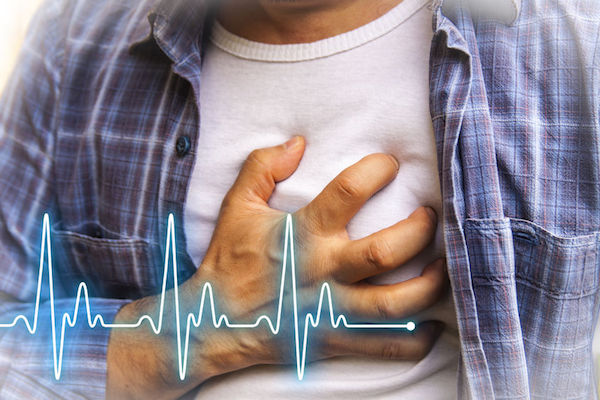Postural orthostatic tachycardia syndrome (POTS) describes an abnormal increase in heart rate after an individual stands up from a lying down (supine) position. Symptoms like dizziness and fainting result from this unusual increase in heart rate.

In a healthy individual, the body’s autonomic nervous system (the system that regulates heart rate, blood pressure and stress response) responds to becoming upright with a slightly increased heart rate and narrowing of the blood vessels to counteract the effects of gravity, preventing a drop in blood supply to the heart.
However, with POTS this does not occur and the body overcompensates with an excessive heart rate increase, a flood of noradrenalin – one of the body’s ‘fight-or-flight’ hormones – into the bloodstream and altered blood flow to the brain.
The condition has been linked to joint hypermobility syndrome (a condition where joints easily move beyond the normal range expected for a particular joint), other underlying conditions like diabetes or lupus, and genetic factors.
The majority of POTS sufferers are women aged 15 to 50.
What are its symptoms?
Most postural orthostatic tachycardia syndrome symptoms manifest upon moving into an upright position. Signs include:
- A heart rate increase after sitting or standing up. The hallmark sign is a heart rate increase of at least 30 beats per minute (or in those aged between 12 and 19 years old, at least 40 BPM) within 10 minutes of assuming an upright position. A rapid, pounding heartbeat (tachycardia) may be felt as palpitations
- Dizziness
- Weakness
- Fainting or almost fainting. It’s estimated that fainting occurs in about a third of sufferers
- Shortness of breath
- Chest pain
- Nausea and other gastrointestinal symptoms such as vomiting, diarrhoea and abdominal pain
- Blurred vision
- Sleep disturbances, such as insomnia
- Chronic fatigue
- Migraine-type headaches
- Excessive sweating
How is it diagnosed?
Diagnosis of postural orthostatic tachycardia syndrome will be based on a medical history – teenagers can sometimes develop it after a growth spurt or it can set in after a viral illness, trauma or pregnancy – and physical examination.
Tests that can help doctors diagnose postural orthostatic tachycardia syndrome include the active stand test and the tilt table test. In the first, heart rate and blood pressure will be recorded while lying down at rest, then at intervals after standing up. The tilt table test involves the patient being tilted upright on a special table where heart rate and blood pressure can be continuously monitored for unusual changes.
What are your treatment options?
Postural orthostatic tachycardia syndrome treatment may include a mixture of various lifestyle adjustments and, if necessary, medication.
Your doctor may advise that you increase your daily intake of water and salt to help increase the body’s fluid retention, as low fluid levels contribute to tachycardia.
Regular exercise is also recommended to improve the body’s ability to effectively pump blood back to the heart.
While no specific medication exists for postural orthostatic tachycardia syndrome, drugs that decrease the heart rate, counteract low blood pressure (hypotension) and increase blood volume may play a therapeutic role.
Can it be prevented?
As much still remains to be understood about why this dysfunction of the nervous system occurs, it is not yet known how to prevent postural orthostatic tachycardia syndrome entirely.
However, the condition can be managed effectively in many sufferers with a study published in Nature Reviews Neurology indicating that with appropriate management up to 60% of sufferers can return to their level of functioning prior to the condition.
IMAGE CREDIT: 123rf.com
